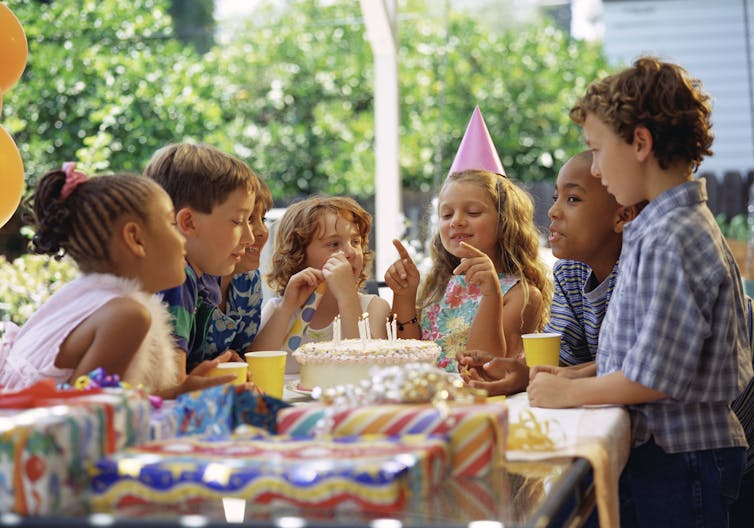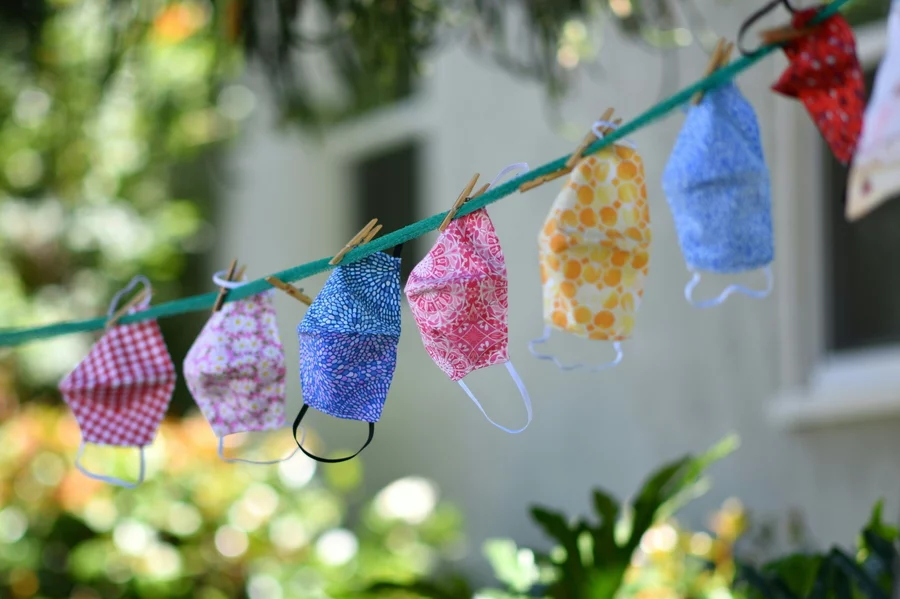Elizabeth Englander, Bridgewater State University and Katharine Covino-Poutasse, Fitchburg State University
The Centers for Disease Control and Prevention issued new COVID-19 guidelines on Feb. 25, 2022, to help inform people’s individual decisions about wearing masks. The new guidance recommends masks be worn indoors only in areas of high community risk and allows approximately 70% of people in the U.S. – including some 19 million children – to ditch their masks.
Most, but not all, experts agree that these changes are appropriate at this point in the pandemic. Many people, weary of the pandemic and its restrictions, gratefully welcome this step, but relief isn’t universal.
In particular, children may worry about yet another change in the “rules.” After all, U.S. children have been consistently schooled on the importance of mask-wearing, and younger children may even have trouble recalling a mask-free world.
So how can adults help children develop coping skills to handle new rules as we navigate changes around mask-wearing guidelines?
We’ve spent the pandemic developing social and emotional resources to help children cope with pandemic-related increases in anxiety and digital technology use. We are both university professors; one, a researcher in children’s development and social relationships; the other, an expert in communicating with children through literature. Combined, our research can help develop more flexible social guidelines for kids and their mask-wearing.
Moving forward largely mask-free
One consistent finding from studies in Brazil, Europe, China and the U.S. is that the pandemic and its frequent changes in school and public health rules have resulted in significant increases in anxiety among children.
Thus it’s helpful for grown-ups to develop consistent messages for kids that will introduce predictability and stability and reduce everyone’s anxieties – but especially children’s – as we navigate changing mask mandates.

Burke & Triolo Productions/ The Image Bank via Getty Images
Here are nine research-based tips for establishing and negotiating new social rules that can help you and your children reduce stress and anxiety.
- Help children anticipate that mask-wearing has to be adapted to the person and the situation. There will still be many places where kids will be required to wear masks, like doctors’ and dentists’ offices. But masks will likely be optional in other settings such as schools, libraries, sports centers and other social venues. The key is to explain to children beforehand that different situations will have different rules. Knowing what to expect can reduce stress.
- Anticipate times when you may feel uncomfortable. Decisions about mask-wearing are personal, so it makes sense that different situations may feel uncomfortable for different people. Imagine you’re sitting at your child’s sporting event and there are a number of unmasked parents who are seated very close together and cheering for the kids. Or, think about how you would feel if your child got an invitation stating that masks are forbidden. Or, imagine that you’re required to wear masks when visiting grandparents, but feel uncomfortable doing so. While these scenarios are different, the key to each is to anticipate problems by asking ahead and search for solutions such as physically distancing yourself, masking up for a short time or politely excusing yourself from the event or situation.
- Be prepared to encounter unresolvable differences of opinion. In these situations, explain to your child that sometimes others have the right to make these decisions. Hosts get to decide what happens in their home; business owners get to decide about rules in their store. There are often options: You can attend and respect the host’s wishes, you can try to find a compromise or you can simply not attend. Teaching your child that the rules don’t apply to them is usually not a good parenting strategy, as it can lead to defiant or even dangerous behavior.
- Emphasize that circumstances change but the principles remain the same. To help children feel less anxious about changing guidelines, emphasize that we all need to observe the same consistent rules: (1) do what’s safe for you and others, (2) think ahead about different situations, and when unclear, (3) ask for guidance. Even if the rules about mask-wearing change again, the process of following these three key steps can remain a stable constant in the lives of children.
- Be respectful, kind and caring about others’ decisions regarding their comfort and safety. As mask mandates and guidelines change, opinions about mask use will continue to be a sensitive issue. While many can’t wait for masks to be a thing of the past, there are others who are filled with worry. Remind your children that mask decisions can be personal and context-driven. Try to avoid language that is judgmental or demeaning. Teach your kids that bullying a child at school for wearing a mask can be just as bad as bullying one who uses a wheelchair.
- Address your child’s questions before different situations and events. For example, kids may be confused or even upset by going to a play date where masks are required if they went to a maskless one just the previous week. In these seemingly contradictory situations, you may need to discuss with children how it’s polite and caring to respect a mask request, even if, as a family, you disagree. Explain that there may be extenuating circumstances that aren’t obvious. Give a clear example they can understand, like a family member who is much more vulnerable to the virus.
- Monitor your children’s anxieties. It’s not so much masks or no masks that cause stress; it’s the cascade of changes that takes a toll. Take time to check in with your children about their feelings. Children can experience stress differently than adults. Things to look for include changes in their sleeping and eating patterns. Talk to them about how they’re feeling about school and friends as they relate to mask-wearing.
- If you are hosting an event, be upfront and communicative about what you are expecting. Let people know in advance what your rules are about mask-wearing: Is it optional or required? When possible, give people who are uncomfortable with your expectations different options. For instance, you may require masks at your child’s birthday party, but if a parent is uncomfortable with that decision, perhaps their child could come just for the outdoor portion of the party, or even attend virtually.
- Check in with the other adults. Is there a reason your family has decided to continue wearing masks, such as having a member of the household who is immunocompromised? Consider sharing your family’s decision, and perhaps your rationale, with your child’s teacher. Did your child receive an invitation with no mask guidance? Ask the parents what they’re anticipating or expecting guests to do. Open communication and checking in can help keep messaging to children more consistent and can lower the chance of a surprising or stressful situation later on.
Emphasizing and modeling empathy and respect for others’ decisions in this pandemic can go a long way toward establishing the kind of normalcy and consistency that helps kids feel less anxious.
[Get fascinating science, health and technology news. Sign up for The Conversation’s weekly science newsletter.]
Elizabeth Englander, Professor of Psychology, Bridgewater State University and Katharine Covino-Poutasse, Associate Professor of English Studies, Fitchburg State University
This article is republished from The Conversation under a Creative Commons license. Read the original article.















